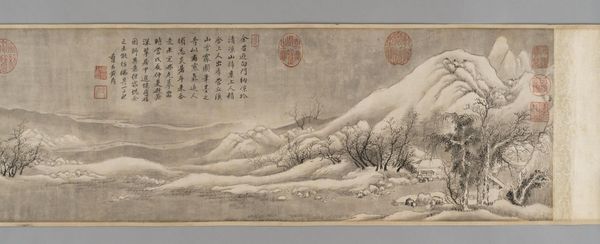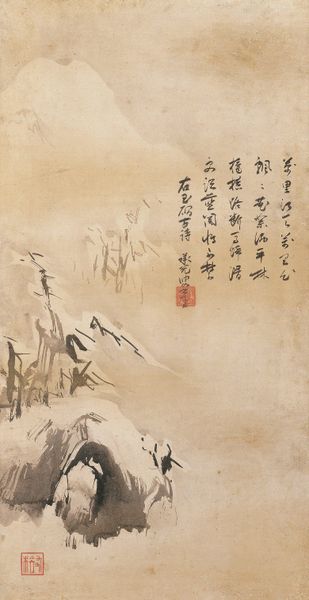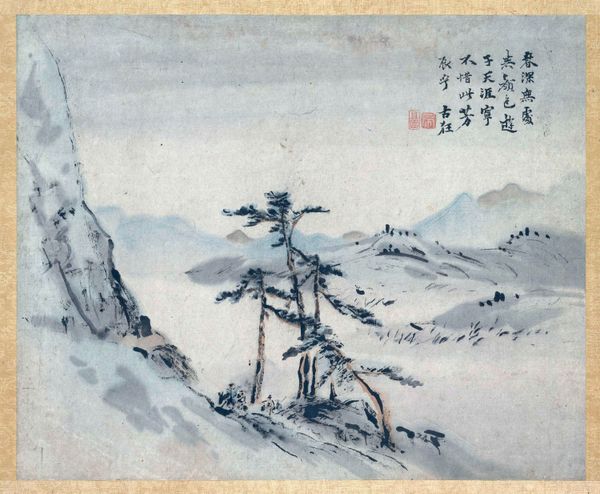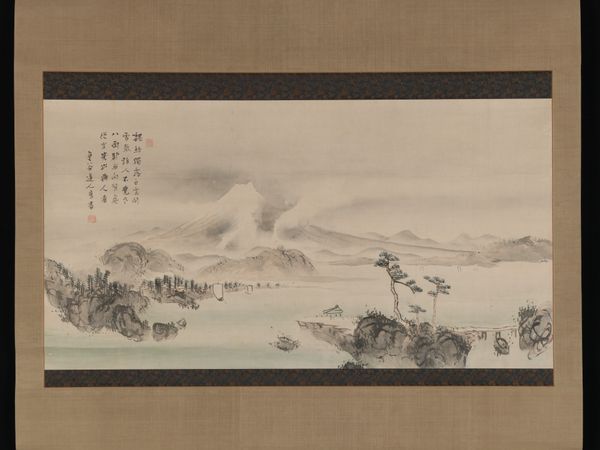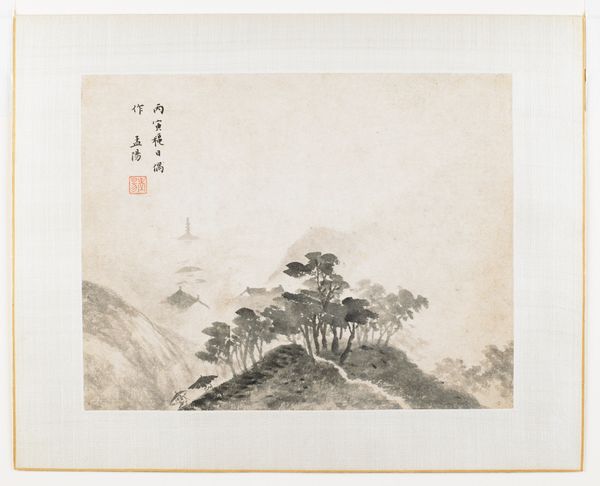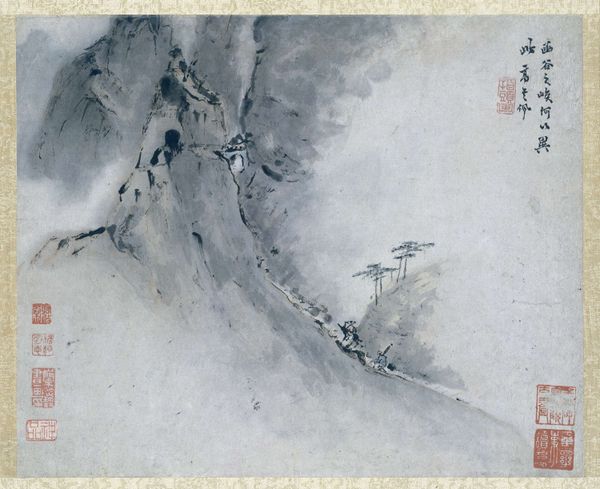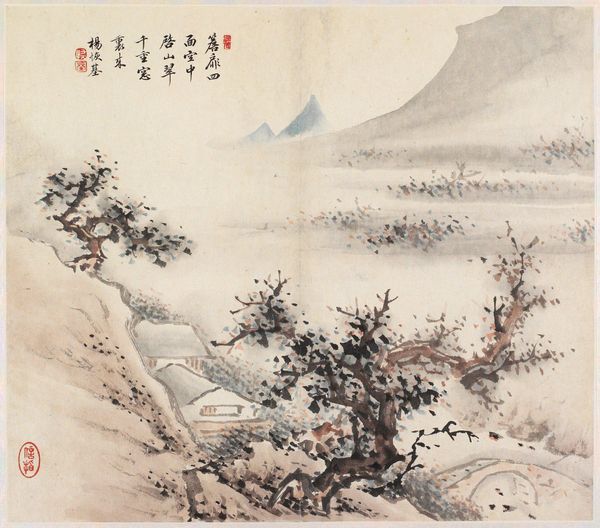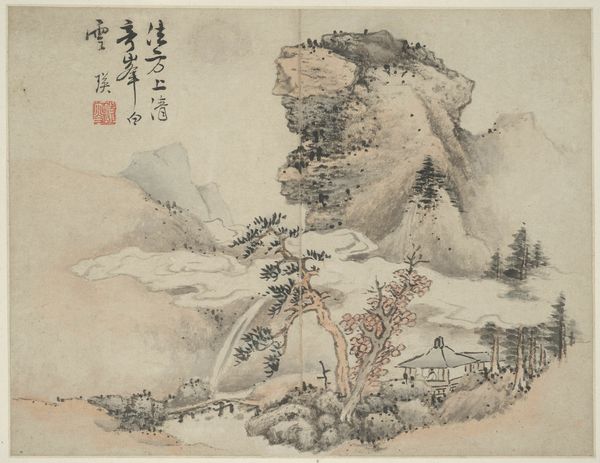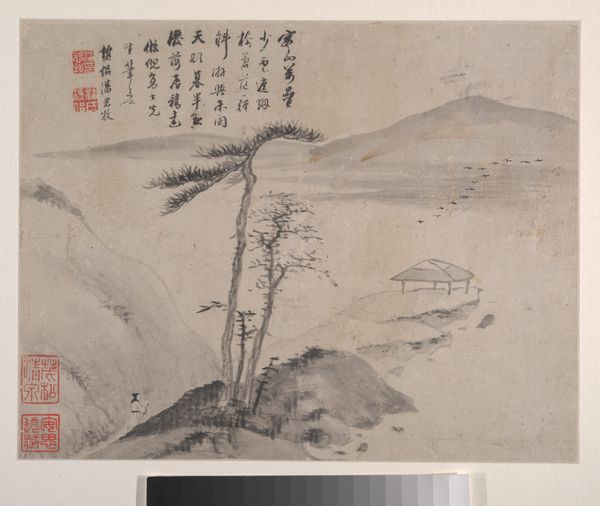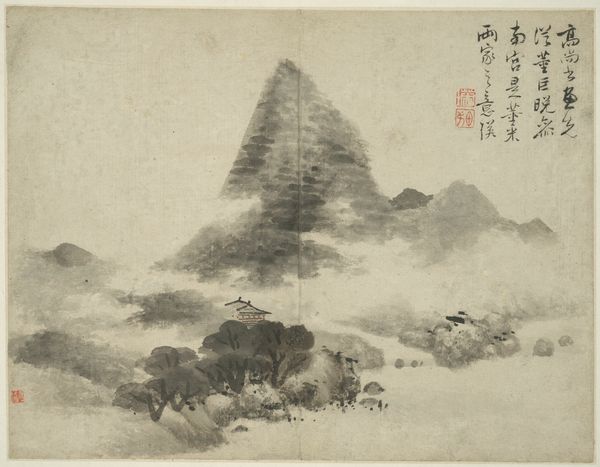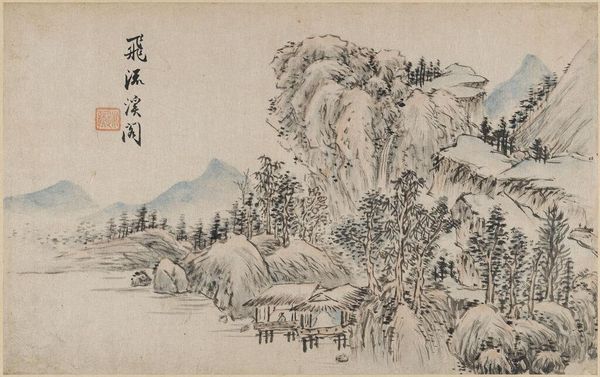
painting, watercolor, ink
#
water colours
#
painting
#
asian-art
#
landscape
#
watercolor
#
ink
#
coloured pencil
#
orientalism
#
watercolor
#
calligraphy
Dimensions: height 27.2 cm, width 33.2 cm
Copyright: Rijks Museum: Open Domain
Curator: Just look at this delicate "Schildering," a painting rendered sometime between 1700 and 1750, attributed to Gao Qipei. The watercolor and ink application gives it such an ethereal quality. Editor: My immediate feeling is one of serene isolation. The subdued colors and misty atmosphere almost create a dreamscape. Is it my impression, or does the mountain pathway suggest a pilgrimage of some sort? Curator: Interestingly, Gao Qipei often incorporated symbolism rooted in Daoist ideals, using landscapes to represent humanity’s place within a vast universe, the pathway can lead towards enlightenment. What’s really fascinating is how artists during the Qing Dynasty had to navigate artistic expression under imperial rule. Court patronage demanded certain styles and themes, yet artists like Gao found ways to infuse personal philosophies. Editor: The visual motifs really support that. Mountains, often representing the axis mundi or the connection between heaven and earth. Note the delicate calligraphy—not just writing, but an art form laden with meaning. And the choice of watercolor and ink contributes to a mood of transient beauty. I see a parallel between the fleeting nature of the mist and the impermanence that underscores much Eastern philosophy. Curator: Indeed. And that's where the socio-political aspect becomes clearer. Painting provided an opportunity for literati artists like Gao to assert their cultural capital outside formal administrative roles, offering alternative visions of governance through metaphor. It wasn’t simply decorative; it was often a statement. Editor: The small scale draws the viewer in, compelling a focused, almost meditative observation. It prompts us to consider what's concealed, perhaps even more than what is revealed. It's a beautiful example of how much emotional weight simple scenes can carry. I’m noticing that each brush stroke feels intentional, almost weighted with intention, contributing to that introspective experience. Curator: The artist's ability to embed so much within such tranquil imagery speaks to the sophisticated cultural dialogue that painting enabled during this period. It’s also important to realize, its very existence is proof of cultural persistence, surviving eras of political change and still echoing its original sentiment today. Editor: Agreed. Reflecting on this, I see a powerful invitation here: a reminder of the enduring power of art to embody not just aesthetic beauty, but also deeply personal and collective experiences.
Comments
No comments
Be the first to comment and join the conversation on the ultimate creative platform.
